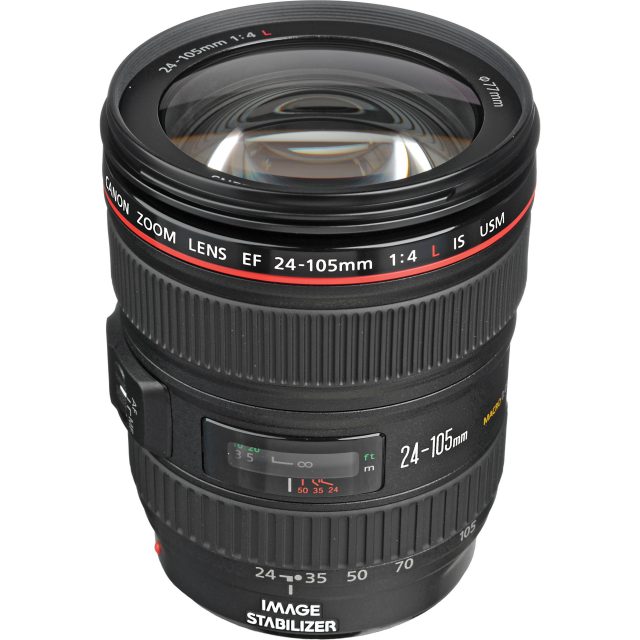A lens mounting adapter allows you to use a lens of different brands with your camera brand, for example, you may use a Canon lens with a Sony camera by adding a suitable lens adapter between your camera and the lens. Lens adapters extend your options of using many lens types with your existing camera body.
The ability to use lens-mount adapters to photograph with any number of vintage lenses and lenses from your favorite optical manufacturers became more apparent since mirrorless camera shooting is becoming the favorable type.
As you already know, camera makers produce lenses with their own mounting system. Unfortunately, the lens mount system is not standardized, so each camera manufacturer uses a different lens mounting configuration. Let us take Canon as an example; they have four different types of lens mount systems:
- EF-S Mount: It is used with a Canon DSLR camera with an APS-C sensor. EF-S lenses cannot be used on a full-frame body.
- EF Mount: It is used with a Canon DSLR camera with a full-frame sensor. EF and EF-S lenses are interchangeable if you have an APS-C Canon camera, you can use any of the EF and EF-S lenses on your camera.
- M Mount: It is used with Canon’s first generation of mirrorless lenses and cameras. In order to use M-mount bodies with the Canon EF/EF-S lenses, an adapter is required.
- RF Mount: Canon’s new mirrorless system If you want to use EF/EF-S lenses with Canon EOS R, you surely need an adapter.

So, to solve the interchangeability issue between different cameras and lenses, many different types of adapters are used. Let us discuss some of them
1- Lens Mount Adapter
What is a lens adapter?
A lens adapter is a camera accessory that allows you to connect lenses with a different lens mount to your camera. It means you can connect, for example, Canon lenses or even vintage lenses to your Sony camera body. Adapters do not have optical elements and are basically metal and plastic tubes that serve simply to connect a lens and camera with different lens mounts.
Effects of adding an adapter
- Mount adapters do not affect the optical performance of a lens because they have no glass. The photo sharpness is not affected.
- Mount lens adapters will not affect the true focal length of your lens if both the lens and the camera are designed for the same sensor size. However, if you’re using a full-frame sensor lens with an ASP-C or cropped sensor camera, this can change the equivalent or perceived focal length. The camera will apply a crop factor (1.5 or 1.6) to the lens field of view, which will make the image appear more zoomed in than it did through your viewfinder. For example, If you use a Canon EF 35mm f/2 IS USM (full frame lens) lens with the appropriate adapter on Sony Alpha 6600 Mirrorless APS-C Camera, you will have a field of view more like a 50mm lens on a full-frame camera. Conversely, if you use Canon EF-S 35mm f/2.8 Macro IS STM (APS- lens) with the appropriate adapter on Sony Alpha 7 IV Full-frame Mirrorless Camera you will have a field of view like a 56mm lens.
- Using a lens with a specific FFD (flange focal distance) on a camera system with a shorter flange distance, the result is you will not be able to achieve infinity focus.
- Some cheap lens mount adaptors (Manual adapters) do not provide the communications system between the lens and the camera through the adapter. They actually work as an extension tube. Lack of the electronic signals and functionality for a camera cancels the auto-focus, the auto exposure functions, and image-stabilization capabilities. Manual adapters will not convey any information between the camera and the adapted lens, forcing you to manually focus and adjust the aperture settings on a lens, and work in manual or aperture-priority mode on the camera.

- On the other hand, there are smart adapters that provide full communication between the camera and the attached lens, so the AF, AE, and Stabilization functions are retained.
Example: Mount EF lenses on Sony camera (Smart adapter)
Canon EF Lens to Sony E Mount T Smart Adapter

This adapter allows you to use Canon EF and EF-S mount lenses on a variety of full-frame and APS-C format Sony E-mount cameras. This model features a rubber gasket to protect the camera’s mount from dust and moisture, offers a status notification LED light to check operation modes, and a dedicated switch that controls in-body image stabilization of select cameras.
This adapter is equipped with numerous capabilities: support for both phase-detect and contrast-detect AF systems as well as the ability to control the aperture from the camera body. Smooth iris effects are possible as well on select lenses and 5-axis stabilization is available thanks to the communication of distance information with supported lenses.
In addition, it features a programmable function button, enables electronic (focus-by-wire) manual focusing, transmits Exif data to the camera, and works with in-lens image stabilization. Additionally, distance and zoom is displayed on certain camcorders and mirrorless cameras, auto magnifying can be enabled, and it can automatically switch into APS-C mode depending on the lens used.
2- Speed Booster

The second type of adapter is called Speed Booster (Accelerator or Turbos). It includes optical lens elements inside them. These adapters not only change the effective focal length of a given lens but also increase the lens’s maximum aperture.
“Speed Booster” is a brand trademark from Metabones; an optics company that made some of the first such adapters. The Speed Booster name has become relatively synonymous with this type of optical adapter.
The Speed Booster is an effective focal length reducer. Many of us are familiar with the lens teleconverter that effectively increases a lens’s focal length; the Speed Booster does the opposite.
Effects of Adding a Speed Booster Adapter
- The Speed Booster adds more optical elements between your subject and the camera’s sensor. Light is bending more than before. This may affect image sharpness, as well as add optical aberrations. In my opinion, any degradation of performances from the Speed Boosters is minimal concerning their benefits.
- When you put a Speed Booster on the back of a lens, its optics change the equivalent or perceived focal length, and thus the field of view of the lens. A Speed Booster with a reduced value of 0.7x will decrease the effective focal length and consequently increase the field of view of a given lens: a 50mm lens with a Speed Booster will have an equivalent focal length of a 35mm lens. (50mm x 0.7 = 35mm)
- Effective Aperture increases:
The formula for f/stop (a numeric ratio used to show the size of a lens aperture) calculation is:
f/stop = focal length/diameter of effective aperture
When we add a lens booster to a lens it reduces the effective focal length by the reduction ratio of the adapter, and from the above formula, the f/stop becomes wider.
Example:
-
-
Canon EF 50mm f/1.8 STM Lens
- Focal length= 50mm
- Aperture= f/1.8
- From the equation diameter (calculated) = 7mm
-
-
-
Canon EF 50mm f/1.8 with speed booster (0.7 reduction value)
- Focal length= 35mm
- Diameter= 7mm
- From the equation Aperture= f/1.2
-
- Lens’s depth-of-field performance will be nearly unchanged by the Speed Booster.
I used the online DOF calculator to estimate the DOF for above both cases, and the result is shown below.

- Using a Speed Booster may turn a single lens into two different optics. For example, using 50mm on an APS-C camera with a standard adapter, you will get an effective focal length of 75mm. But if you use it with a speed booster the 50mm is back to being the familiar 50mm although it is mounted on a crop sensor camera (The crop action of mounting a full frame lens on an ASP camera is canceled by the reduction effect of the speed booster)
Example of Mount EF lenses on Sony camera with a speed booster
Metabones Canon EF Lens to Sony E Mount T Speed Booster Ultra 0.71x II

This adapter will increase the apparent angle of view of your full-frame lens by 0.71x, effectively combating the crop factor of an APS-C camera. This also increases the apparent sharpness of your image while also increasing the maximum aperture by 1 stop, making your full-frame lens look as if it were mounted on a full-frame camera.
It features a rubber gasket to protect the camera’s mount from dust and moisture, offers a status notification LED light to check operation modes, and provides a dedicated switch that controls in-body image stabilization of select cameras.
The main features of the booster adapter include support for both phase-detect and contrast-detect AF systems, as well as the ability to control the aperture from the camera body. A 5-axis stabilization is available thanks to the communication of distance information with supported lenses. In addition, it features a programmable function button, enables electronic (focus-by-wire) manual focusing, transmits EXIF data to the camera and works with in-lens image stabilization.
Conclusion
A lens adapter is a device that enables you to connect a lens with a camera that is not compatible with the lens mount. The simplest ones provide just a physical connection between two different lens mounts. Therefore, some features such as autofocus, auto exposures, and EXIF data do not work when the adapter is on.
However, smart lens adapters can enable electrical communication between the lens and camera besides the physical connection. Finally, the speed posters incorporate optical elements that influence the photo setup. They reduce the effective focal length of your lens and give you an extra f/stop.
Related posts
Best Extension Tubes For Canon
Thanks for reading, I hope you enjoyed the article, in case you have any questions just drop them below & I will be happy to answer you.
If you enjoy the site, don’t forget to subscribe, we will only inform you when a new article is posted.









I have started a youtube channel about five months ago and is using an older model phone to shoot my videos. I also make my own videos – as I don’t have the capital to pay anyone. I am thinking about buying a camera but have to learn about cameras. I know that this post is about lens mounting adapter and speed booster. But I would like to know, which affordable camera to buy to do my videos? Really glad to have read this article because I didn’t know that you can use different model lens on other models with the use of and an adapter. Which I would consider to be cost effective, as you don’t have to buy and whole camera to get the use of another lens.
Hi Shevonne
Thanks for the comment, as for your question about an affordable camera for shooting video, my recommended cameras are:
Canon EOS 5D Mark III
Canon EOS Rebel T7i
Sony A6000
Thank you very much for this valuable detailed post about Camera Lens Mounting adapter and speed booster. I really don’t know much about this. I also have a camara. But I don’t use an adapter. I have a friend who does photography. I am sending this post to him. I think this will be very important to him. Keep posting like this.
Thanks
Hi Amin
Previously I do not know that there are mounting adaptors to connect the lens which are not compatible with the camera. It is way much helpful when you need to use a non-compatible lens.
It is interesting to know that there are two types of mounting adaptors, one is the lens mounting adaptor which does not have access to controls getting from the camera. Another one is a smart lens adaptor which can be controlled from the camera.
Thanks
Sujith 🙂
Thank you for your comment